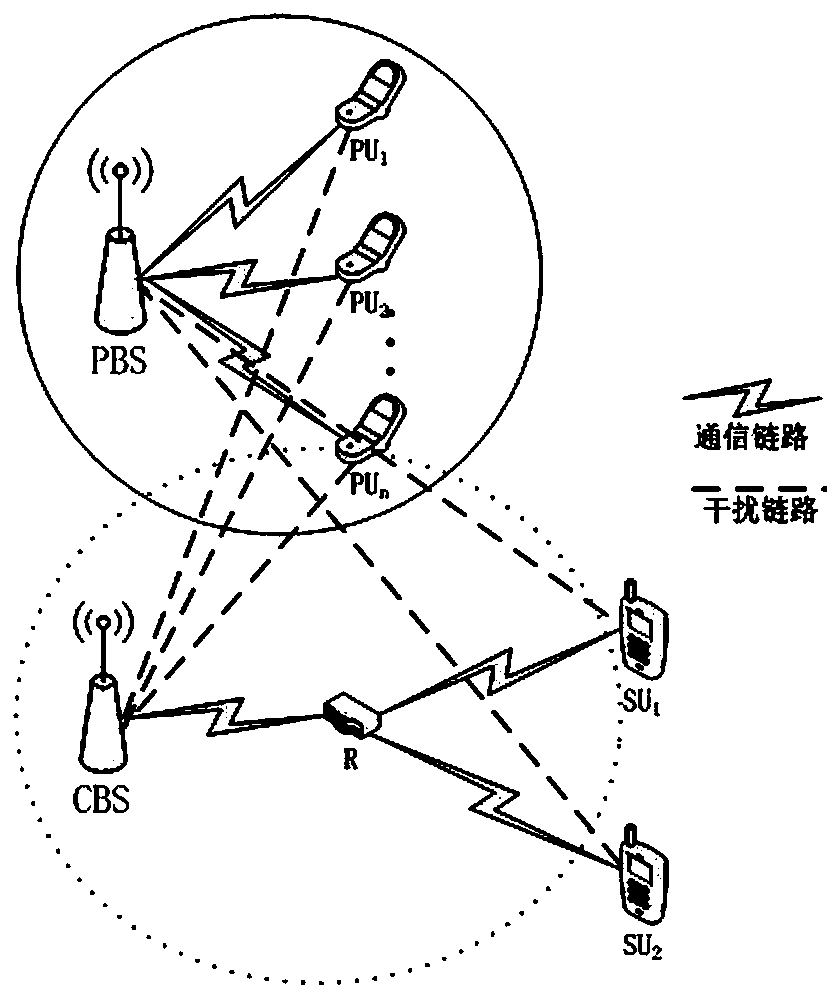A power allocation method for cognitive radio network based on NOMA technology
A technology of cognitive radio and allocation method, applied in the field of power allocation of cognitive radio network, can solve the problems of affecting the communication quality of the system, small signal-to-noise ratio of secondary users, affecting the communication of primary users, etc., so as to improve the system throughput. Effect
- Summary
- Abstract
- Description
- Claims
- Application Information
AI Technical Summary
Problems solved by technology
Method used
Image
Examples
Embodiment Construction
[0031] In order to make the objectives, technical solutions and advantages of the present invention clearer, the present invention will be described in detail below with reference to the accompanying drawings and specific embodiments.
[0032] The present invention proposes that on the basis that the secondary user meets the minimum transmission rate requirement, by dynamically adjusting the power allocation factor to control the power of the sensing base station and the relay, the throughput of the secondary user can be effectively improved.
[0033] Such as Figure 1 to Figure 2 As shown, an embodiment of the present invention provides a flow chart of a method for power allocation in a NOMA technology-based cognitive radio network based on a non-orthogonal multiple access technology and an implementation system model diagram thereof. The method includes the following steps:
[0034] Step 1: Establish the downlink model of the cognitive radio network in the Underlay spectrum sharing ...
PUM
 Login to View More
Login to View More Abstract
Description
Claims
Application Information
 Login to View More
Login to View More - R&D
- Intellectual Property
- Life Sciences
- Materials
- Tech Scout
- Unparalleled Data Quality
- Higher Quality Content
- 60% Fewer Hallucinations
Browse by: Latest US Patents, China's latest patents, Technical Efficacy Thesaurus, Application Domain, Technology Topic, Popular Technical Reports.
© 2025 PatSnap. All rights reserved.Legal|Privacy policy|Modern Slavery Act Transparency Statement|Sitemap|About US| Contact US: help@patsnap.com



